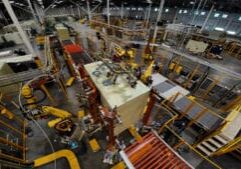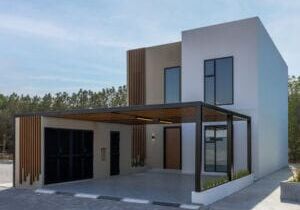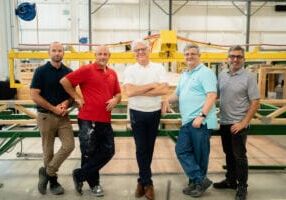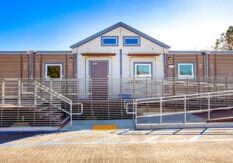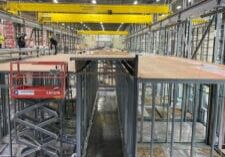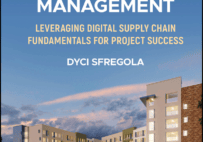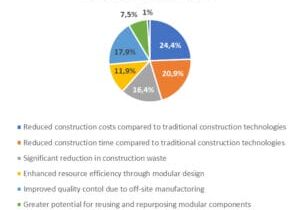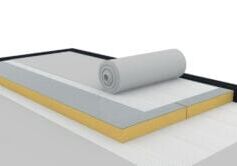Aster Place by ROC Modular
The 2024 Best of Show for Relocatable Structures
Aster Place, a supportive housing building in Richmond, British Columbia, Canada, won the Best of Show Award and Honorable Mention for relocatable structures in the social and supportive housing category of the 2024 Awards of Distinction ceremony, held on the fnal evening of the 2024 World of Modular conference. The project was constructed by Tasu Construction Ltd., a general contractor from Squamish, British Columbia, and ROC Modular, a modular manufacturer in Bow Island, Alberta, and was completed in 2022.

The 40-unit, 21,726 square foot temporary housing structure is part of an extensive investment by British Columbia to provide affordable housing and services for residents who are elderly, disabled, in financial need, and indigenous populations. The program, called Building BC, represents an investment of $1.2 billion over 10 years to deliver an additional 2,500 new homes in the province. Many of those new homes are benefitting from the multiple advantages modular construction provides.
The agency is focusing on underutilized sites to provide temporary housing. Aster Place is set on an existing parking lot with a Triodetic foundation.
Rhys Kane, Director of Business Development for ROC Modular, likens the foundation to a raft. “It’s a scaffold-type structure of metal and it sits as a raft slab across the top of the ground. It has these pivot points that you can adjust, and it effectively moves with the ground. It was invented and developed in northern Canada to sit above the permafrost. We’ve used it on northern projects and recognized that it was a good option for a relocatable foundation.”
The specialized foundation is a good investment because it reduces construction time and can be moved along with the building, saving the cost of another foundation.
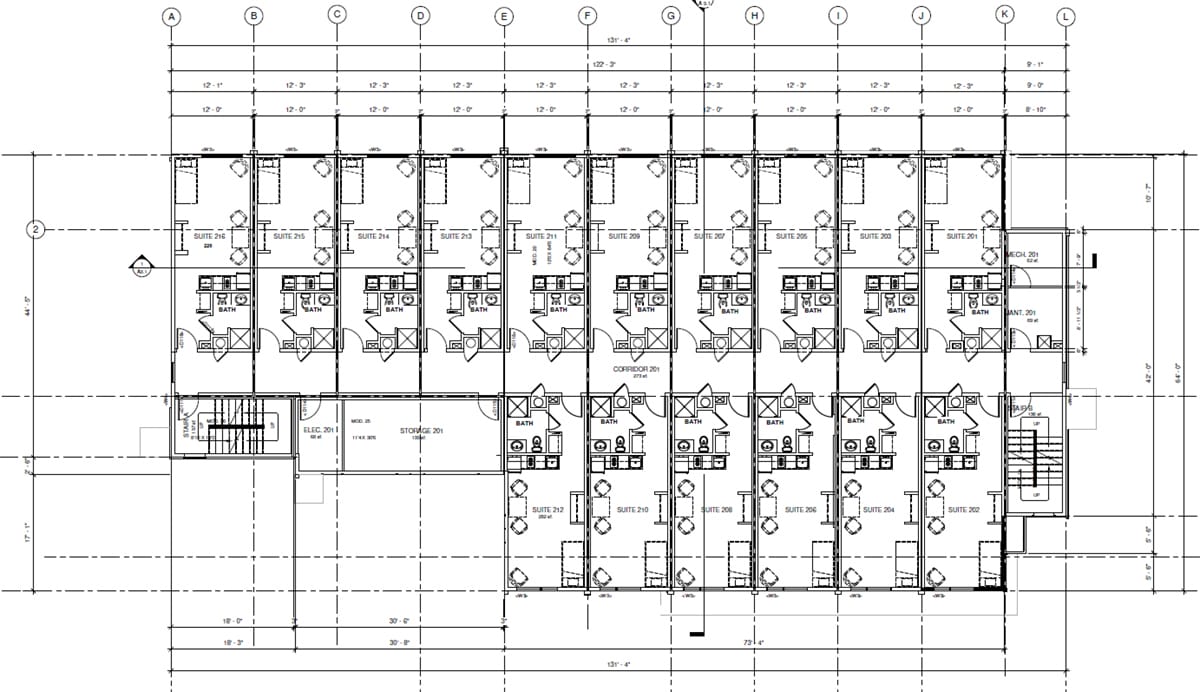
The building is three stories, with the main floor housing support services and common areas for residents, including meeting rooms,
an office, a TV room, laundry facilities, storage, medical rooms, and a shared commercial-grade kitchen. Services provided include daily meals, life-skills training, employment assistance, counselling, physical and mental health resources, and access to addiction treatment and recovery services. Each unit provides a private bathroom and kitchenette.
Units come out of the factory completely finished, including mechanical systems, interior finishes, exterior finishes, kitchens, bathrooms, and even furniture, beds, and mattresses. Four of the 40 units are accessible. The project required 39 modules and took 345 days to complete.
The modules are built to meet all local building codes and permitting requirements. Aster Place meets Step Code three of the BC Energy Code, and includes features like triple pane windows, additional wall insulation, high performance mechanical systems, and LED lighting. Living units are designed to keep energy costs low for residents. The structure is set to remain on site for five to ten years while the local government explores additional housing opportunities.
Kane sees the development as a perfect showcase for how modular can help communities respond to the affordable housing crisis. “It’s very repeatable in terms of the design. There’s a template, a kit of parts to do these buildings. The modular approach is a great way to fast track. And it shows what commitment to a program can do to deliver these buildings at such speed. It takes the city of Richmond and BC Housing to say, ‘We’ve identified this site. We’re going to fast track this project, and we’re going to call it temporary. That means it avoids all the entitlements and all of the things that come with a permanent structure in terms of building permit process and timelines, which can take one to two years. And the modular company can basically repeat the modules at the factory. It provides a retained asset for the city and BC Housing that can be moved in the future.”
So far, the province has deployed over 600 housing units in similar fashion. Most are in 30-to-50-unit, three-story configurations, similar to Aster Place. The smaller-sized buildings reduce the amount of community pushback that might come with larger developments containing more units. Everything is fast-tracked through the review and permit process to speed deployment.
The project wasn’t without its struggles, of course. Since the site was in an urban environment, getting the modules to the site, setting up cranes, finding staging areas, and setting them was a challenge. The speed of design is another hurdle the team had to collaborate on to solve.
“You are delivering the project at such a fast pace, putting together the design and engineering at the same time, getting client input, and trying to meet code requirements is a challenge. We wanted to be manufacturing within six months, so there was lots of early engagement and decision making early in the process.” ROC and Tasu worked closely with suppliers, subcontractors, and the design team to ensure that the project met its budget requirements while providing energy efficiency within the short design timeframe. ROC also served as a consultant to help the team adapt modular construction techniques to the needs of the project.
ROC Modular has built over 5,000 modules and has extensive experience in creating affordable housing. They focus their services in western Canada and the north and central United States and have a 60,000 square foot manufacturing facility in southern Alberta. They specialize in social and affordable housing, hospitality, multi-family, education, and industrial modular construction. ROC gives back to the communities it serves, with a relentless focus on “creating spaces for people to thrive.”
The Aster Place development is operated by Community Builders Group, which provides culturally appropriate living assistance to those in need.
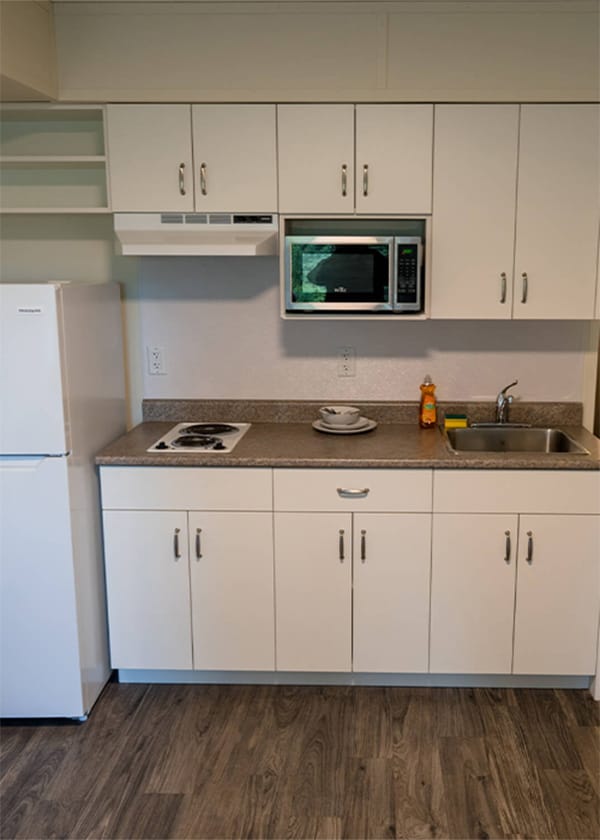
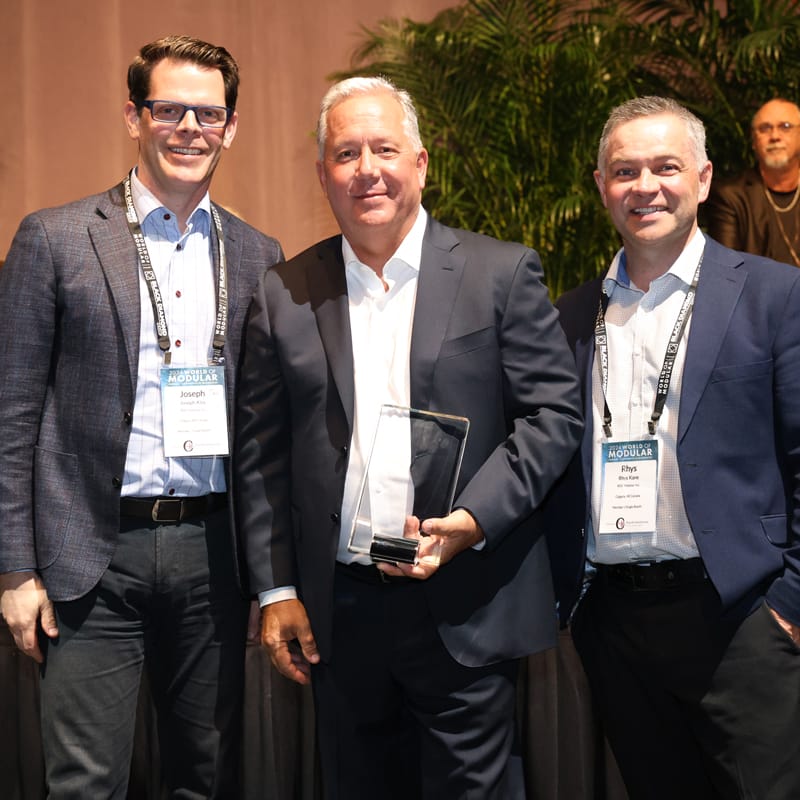
ROC Modular CEO Joe Kiss (left) and Rhys Kane (right) accept an Award of Distinction from MBI past president Chuck Walen at the 2024 World of Modular.
About the Author: Dawn Killough is a freelance construction writer with over 25 years of experience working with construction companies, subcontractors and general contractors. Her published work can be found at dkilloughwriter.com.
More from Modular Advantage
Resia: Breaking All the Rules
Resia Manufacturing, a division of U.S.-based Resia, is now offering prefabricated bathroom and kitchen components to industry partners. Its hybrid fabrication facility produces more precise bathroom and kitchen components (modules) faster and at lower cost than traditional construction. Here’s how Resia Manufacturing does it.
How LINQ Modular Innovates to Bring Modular To The Market in the UAE and Beyond
LINQ Modular, with an office and three manufacturing facilities in Dubai, is a modular firm based in United Arab Emirates. The company is on a mission: to break open the housing and construction markets in the Gulf Cooperation Council (GCC) area with modular.
ModMax: Redefining Modular Construction with Confidence and Precision
ModMax was born out of frustration—frustration with five persistent pain points in modular construction: Permitting bottlenecks. Production delays. Rigid designs. Disconnect between “the office” and the field. Lack of transparency and communication.
LifeArk: Disaster-Resilient Housing from Recycled Plastic and 100-year-old Technology
Wee compares LifeArk’s housing units to Yeti coolers, as they are built similarly. Each component takes 15 to 20 minutes to manufacture, has an R-value of 40, and includes molded slots and chases for wiring, plumbing, fire sprinklers, and other utilities.
Building the Future of Modular Edge Infrastructure
The edge data center market is expanding rapidly, driven by the surge in AI workloads, IoT adoption, and the need for localized compute power. In these environments, sustainability, scalability, and reliability are non-negotiable. Cooling is among the most complex challenges for operators—and one of the most decisive factors in long-term success.
Accelerating Light-Gauge Steel Construction: A Semi-Automated Digital Workflow for Off-Site Projects
For construction professionals, the message is clear. By adopting semi-automation and digitalization, companies can deliver projects faster, more accurately, and more profitably, while also building stronger collaboration across teams. The approach is not about replacing people with machines, but about empowering people with better tools and processes.
Why Modular Data Centers Are Gaining Momentum
Artificial intelligence, high-performance computing, and edge applications push the limits of traditional “stick-built” data centers. They take years build, often struggle with high density workloads, and aren’t optimized for deployments near end users. Modular data center platforms are purpose-built to address these challenges, offering flexibility and scalability to adapt to evolving technologies, while opening new opportunities for the modular construction industry.
Supply Chain Innovation in Action: 5 Habits Every Modular Leader Should Practice
By applying these principles to supply chain practices — collaborative planning, strategic procurement, scenario modeling, digital tools, and transparent forecasting — construction leaders can build value chains that are not just efficient and agile, but truly innovative.
Exploring the Role of Modular Integrated Construction (MiC) in Advancing Circular City Principles – A Survey of Stakeholder Perspectives
The survey findings highlight the significant potential of Modular integrated Construction (MiC) in advancing the development of circular cities. By reducing costs, accelerating construction timelines, and minimizing waste generation, MiC offers a promising approach to sustainable urban development.
The Use of MS POLYMER™-Based Sealants and Adhesives in Modular Building
These products combine flexibility and elastic recovery with excellent adhesion to different substrates and have already shown their usefulness in traditional construction. Now it’s time for them to be put to use in the modular construction industry.

